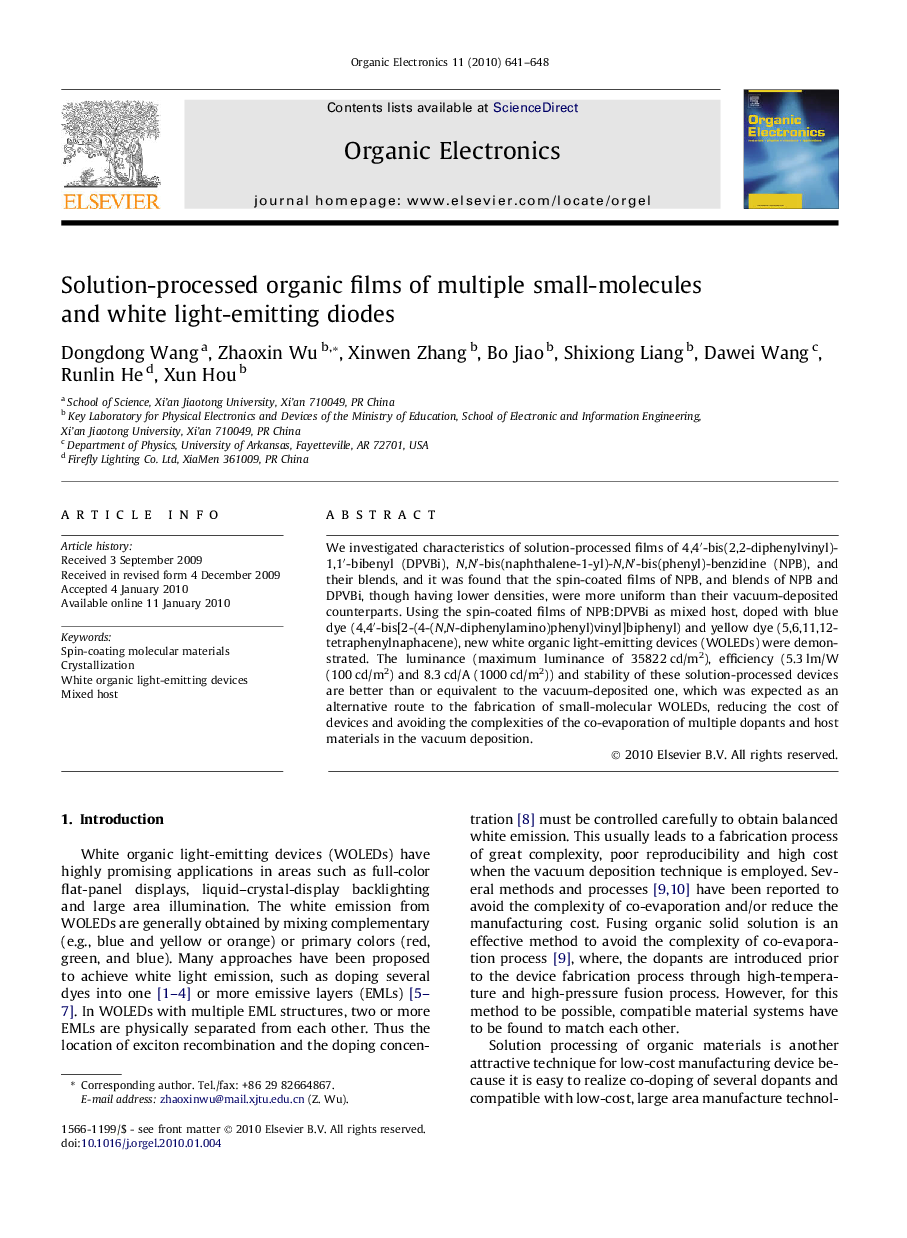| Article ID | Journal | Published Year | Pages | File Type |
|---|---|---|---|---|
| 1268027 | Organic Electronics | 2010 | 8 Pages |
We investigated characteristics of solution-processed films of 4,4′-bis(2,2-diphenylvinyl)-1,1′-bibenyl (DPVBi), N,N′-bis(naphthalene-1-yl)-N,N′-bis(phenyl)-benzidine (NPB), and their blends, and it was found that the spin-coated films of NPB, and blends of NPB and DPVBi, though having lower densities, were more uniform than their vacuum-deposited counterparts. Using the spin-coated films of NPB:DPVBi as mixed host, doped with blue dye (4,4′-bis[2-(4-(N,N-diphenylamino)phenyl)vinyl]biphenyl) and yellow dye (5,6,11,12-tetraphenylnaphacene), new white organic light-emitting devices (WOLEDs) were demonstrated. The luminance (maximum luminance of 35822 cd/m2), efficiency (5.3 lm/W (100 cd/m2) and 8.3 cd/A (1000 cd/m2)) and stability of these solution-processed devices are better than or equivalent to the vacuum-deposited one, which was expected as an alternative route to the fabrication of small-molecular WOLEDs, reducing the cost of devices and avoiding the complexities of the co-evaporation of multiple dopants and host materials in the vacuum deposition.
